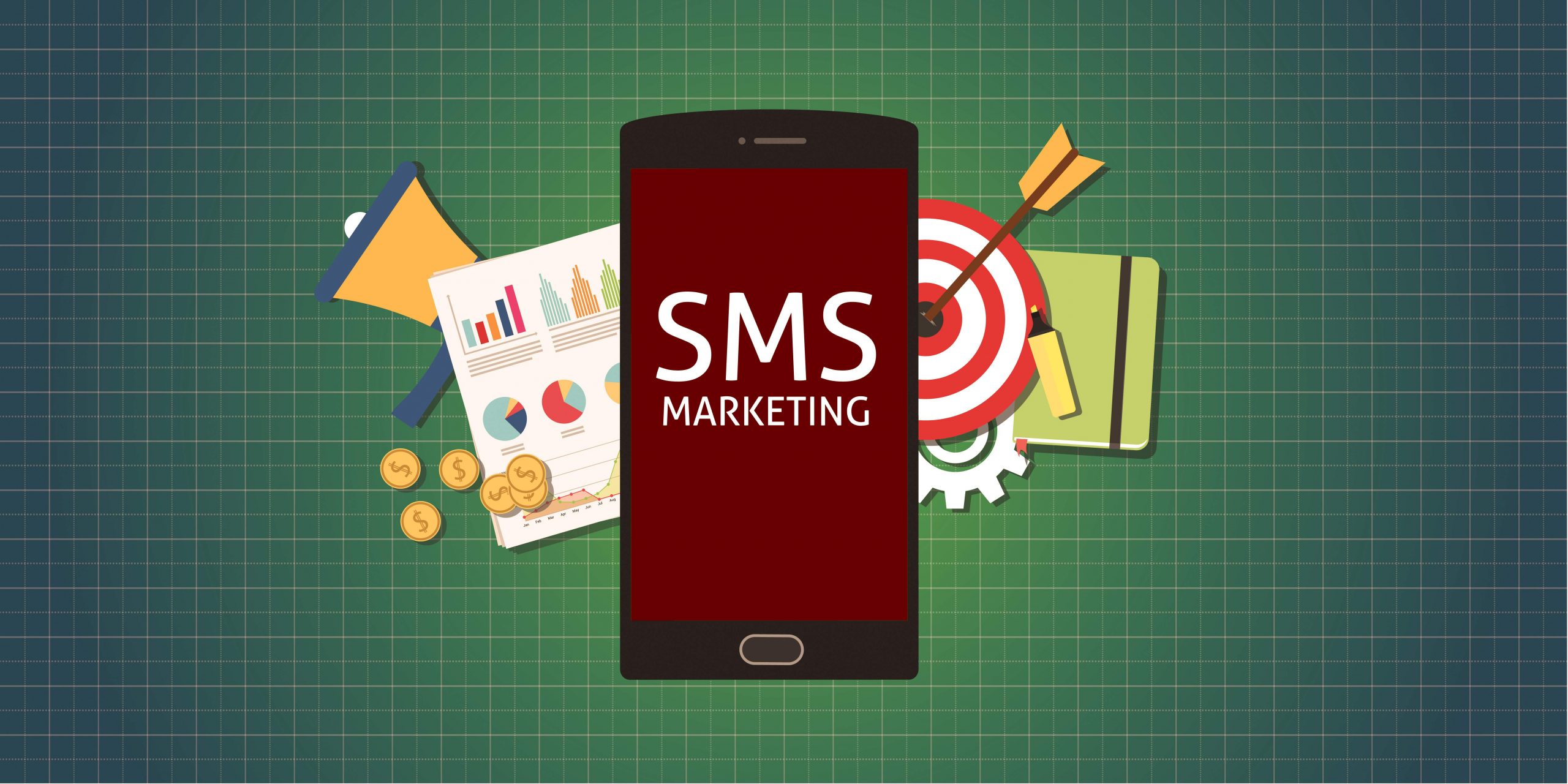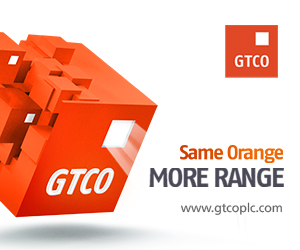Economy
A Complete Guide To Launching A Successful SMS Marketing Campaign

Today, many people use smartphones, which have already become an extension of their bodies. Also, they’re becoming more comfortable communicating with businesses via mobile devices.
So, you better start SMS marketing now, or you’ll miss many opportunities to make sales. It can be a great way to improve your social marketing, allowing you to reach potential and existing customers in real time via targeted messaging. But first, what’s SMS marketing?
SMS marketing refers to how marketers deliver marketing messages via text message. It’s an opt-in campaign requiring people to subscribe to receive notifications. Common types include the following:
- Remarketing
- Surveys
- Personalized promotions
- Exclusive deals and discounts
SMS marketing also has higher open rates than other forms of marketing, particularly email marketing. The average open rate of the latter is around 15-30%, while SMS exceeds 90%. And you can even reach up to 100% with the help of tools such as Unlimited Ringless voicemail.
So, where should you start? This post will show you a step-by-step process to guide you in implementing a successful SMS marketing campaign. Read on to learn more!
- Pick The Right SMS Platform
The first step is all about deciding which SMS engine is best suited for executing marketing campaigns. There are plenty of solutions out there in the market. However, not all of them are created the same.
Worse, some solutions may cost you more in the long run without delivering the desired ROI. And how do you distinguish real gold from fake ones? Consider the following when choosing an SMS provider:
- Message Delivery: A message should be sent at the right time—not too late, especially when there’s time-sensitive information involved. Also, it should be accurate, meaning there’s little to no chance of sending a message to incorrect phone numbers.
- Ease Of Use: Do you find it easy to create custom messages? Can you schedule messages and attach files easily? If you agree to these questions, you might’ve found the SMS engine your business needs.
- Integration: You might have a few business tools in place, and one of them is probably a customer relationship management (CRM) system. Ensure your SMS engine can integrate with your CRM so that you can access it while on the go.
- A Test Drive: Never go for a solution that remains undiscovered. Make sure you can try it out for free to see if it’s worth your time and money and how the system works under the hood.
- Good Reputation: Last but certainly not least, check the SMS provider’s reputation. Visit their website, read some testimonials, or dig into the conversation through their social media accounts. This is to find out whether they’re dedicated or not.
You may also consider using additional supporting tools like an auto dialer. It aims to turn your existing system into a powerful business dialing platform.
- Get An SMS Number
Getting a dedicated SMS marketing number sets you up for success. SMS providers often require businesses to invest in a virtual number to prevent multiple brands from using the same number.
Here are your options:
- Toll-Free Numbers: These are standard numbers for most brands for convenience and deliverability. They’re easy to activate and promote mass texting.
- 10-Digit Long Codes (10DLCs): 10DLCs are a new option for businesses. They’re ideal for non-time-sensitive messaging and low-volume texting.
- Short Codes: These numbers are a consumer favorite because they’re easy to remember. However, they’re expensive and have a lengthy approval process.
- Set Up Your SMS Subscriber List
Without a solid and targeted SMS subscriber list, all your marketing efforts will likely go down the drain—something you wouldn’t want to happen.
Encouraging potential and existing customers to opt in can be difficult, time-consuming, and costly. Even without an SMS program, collecting opt-ins is a great jumpstart for any brand that needs to do it.
Here are a few tips to encourage customers to join your subscriber list:
- Create an offer that’s exclusively available to subscribers.
- Give subscribers a time-sensitive promotion (e.g., Buy One, Get One).
- Deliver information essential to customers.
- Introduce new items to grab the attention of potential and existing customers.
However, setting up an SMS subscriber list isn’t easy. Unlike other forms of marketing, particularly social media, SMS requires consent. What does this mean? You have to ask customers and prospects for permission before adding them to your list and sending them marketing messages.
In the U.S., SMS marketing is regulated by the Federal Communications Commission. This enforces laws like the Telephone Consumer Protection Act (TCPA) of 1991, which protects consumers from intrusive and abusive telemarketing practices.
- Create An Automated SMS Welcome Message
Do you believe in the saying ‘first impression lasts’? You should be! That’s why building an automated welcome message is crucial. This way, you’re ready when customers and prospects start opting in.
A good welcome message educates new subscribers about your products and services, familiarizes them with your content, and encourages them to make their first purchase. Out of all automated tools, the welcome message often generates the most revenue for many brands.
Here are some tips to follow when creating an SMS welcome message:
- Set it up and make sure it sends a welcome message as soon as someone subscribes to your list.
- Don’t forget to include the name of your company. This is a way of introducing yourself to your customers and prospects.
- Make sure your messages are personalized and cater to your customers’ specific needs. Address them using their first name for a personalized touch.
- Thank subscribers when they join your list.
Aside from these tips, ensure your SMS welcome message has a clear call to action (CTA). CTAs are words or phrases that encourage audiences to take the action you want them to do (e.g., ‘Subscribe now and get a 15% discount on your first purchase!’).
- Expand Your SMS Subscriber List
Once you have a solid SMS subscriber list, you’ll need a strategy to grow and expand it. Always look for opportunities to encourage customers and prospects to opt in without compromising their experience. Here are some tips that may help you accomplish that:
- Leverage The Check-Out Experience: Including the check-out step in your SMS consent collection allows customers to receive SMS campaigns while processing their orders. This is a non-intrusive way to motivate customers to subscribe to your list.
- Incentivize Website Visitors: When creating an SMS sign-up form for your site, ensure you target those already part of your email list, provided you have one. Then, include eye-catching discounts or freebies to encourage them to subscribe.
Follow these two simple tips to motivate your audience to subscribe to your SMS list without sounding intrusive.
- Measure Initial Performance Rates
Do you want to find out which strategy works best for your business? If you do, you need to measure your initial performance rates on a regular basis.
You need to set your eyes on the following key performance indicators (KPIs):
- Delivery Rate: This refers to the percentage of SMS messages delivered successfully to your contacts. Also, this is one of the most crucial KPIs SMS marketers have to monitor. The average delivery rate for SMS marketing is 98%.
- Click Through Rate (CTR): CTR is the foundation of your campaign’s success. It refers to the percentage of link clicks to the SMS messages you delivered. The average CTR for SMS marketing is 36%.
- Opt-Out Rate: This vital KPI refers to the percentage of subscribed contacts who unsubscribe to your SMS list. It shows that some of your subscribers aren’t interested in your content.
- Conversion Rate: This critical KPI refers to the percentage of subscribers who made a purchase. The average conversion rate for SMS marketing is 29%. It’d be best to aim higher than this to ensure a steady flow of revenue.
If your SMS messages get subpar digits, consider making necessary adjustments through A/B testing. Focus on elements like message type, number of messages, and timing.
- Send Your First Campaign
Once you’re done collecting subscribers for your SMS list, you may start your first SMS campaign. Make sure you include the following details:
- Company name
- One time-sensitive CTA
- The first name of the subscriber and other details that’d make the message more personalized
- A friendly and conversational tone
- Value
Here are some examples you might want to consider for your first SMS campaign:
‘Blue Green Flask: These products are getting retired, which means you can get a 30% discount while supplies last! Start shopping now: www.bluegreenflask.com/clearancesale30. Reply STOP to opt out.’
‘Noun: 30% off on ALL dry shampoos and conditioners! Use the code SHAMCON at check-out to avail of the discount. Excludes custom kits and value. Shop: www.noun.com/shamcom. Reply STOP to opt out.’
‘Borough Linen: We’re grateful to you! And as a way to give you thanks for your recent purchase, we’re giving you USD$50 credit on your next order using the code: GIFT50. Shop now: www.boroughlinen.com/gift50. Reply STOP to opt out.’
What makes these examples effective is that they can show clarity and conciseness while conveying the message they want to deliver.
If you want to improve your messages, add a GIF or image below 600KB. This converts SMS to MMS (multimedia messaging service), which limits you to 1,600 characters. However, remember that MMS costs more than SMS under many plans.
- Recover Abandoned Shopping Carts
Experts believe that over 50% of online shoppers leave their carts unattended. This is an opportunity to recover lost revenue. What’s great is that SMS is one of the most effective ways to motivate customers to complete their orders.
Here are some examples of SMS campaigns for cart abandonment:
‘Hey Jan! I noticed you left some items in your cart. Here’s 20% off to help you complete your checkout now! Check it out here: mycookingfantasy.com/potsandpans.’
‘Hi Mark, you left some great items in your shopping cart. Here’s a free shipping voucher just for you: bit.ly/5Fg4B. This exclusive offer will expire in three days. Reply STOP to opt out.’
- Use SMS To Announce New Products
Keep your subscribers updated by sending them an SMS message whenever you release new collections, products, and services. And to make everything more special, consider offering them early access when new items drop.
Here are some examples of SMS messages announcing new products and services:
‘KITE: Thank you for subscribing! You’ll be among the first to shop for our upcoming product launch! Before anything else, here’s a 25% discount, so shop now!’
‘Banana Floss: New Coco Collection! You’ll surely fall head over heels for our tropically luscious Coco Daiquiri and sunny Beach Copacabana set! Grab some before they’re gone! Shop now: bananafloss.com/cococollection.’
- Engage Customers Using Time-Sensitive Messages
Reaching customers at the right time can take your SMS campaign to the next level. This is where time-sensitive campaigns, such as a price drop or back-in-stock alert, come in.
Price drop alerts are ideal for SMS, as it requires contacts to act as fast as possible. Send these messages to people on your list to make them exclusive to mobile users. Here’s an example of a price drop alert:
‘CookingWare: PRICE DROP ALERT! The 15-pc stainless steel premier set was USD$760—now USD$380! Get yours now before they’re gone: cookingware.com/12Ho11goiT23.’
Back-in-stock alerts inform subscribers that the items previously out of stock are back and ready to ship. Here’s an example of a back-in-stock alert:
‘Hey, Martin, our 15-pc stainless steel premier set is back in stock! Make cooking more fun with nothing but the best. Shop now before they’re gone: cookingware.com/12Ho11goiT23.’
- Use SMS For A Great Post-Purchase Experience
SMS marketing is effective not only for increasing sales but also for improving post-purchase experiences. Including transactional SMS messages, like billing updates, appointment reminders, and shipping delay alerts, may help you reach and exceed customer expectations.
Once you complete the delivery, you may use SMS to send valuable details directly to a customer’s phone instead of their email inbox. These may include the following:
- Share tips and tricks on how to use the product in the best way possible
- Share a link (e.g., how-to guides or tutorial videos)
- Highlight customers who use the product
- Send reminders regarding their loyalty points or VIP status
Final Words
SMS marketing is one of the most effective ways to reach and interact with potential and existing customers. They also have one of the highest open rates, around 95-98%. This means that for every 100 successfully delivered SMS, almost all are opened.
To ensure the success of your SMS campaigns, follow the best practices discussed above. These include building a subscriber list, creating welcome messages, measuring performance, delivering time-sensitive information, and personalizing messages.
Economy
Petrol Supply up 55.4% as Daily Consumption Reaches 52.1 million Litres

By Adedapo Adesanya
The supply of Premium Motor Spirit (PMS), also known as petrol, increased by 55.4 per cent on a month-on-month basis to 71.5 million litres per day in November 2025 from 46 million litres per day in October.
This was contained in the November 2025 fact sheet of the Nigerian Midstream and Downstream Petroleum Regulatory Authority (NMDPRA) on Monday.
The data showed that the nation’s consumption also increased by 44.5 per cent or 37.4 million litres to 52.1 million litres per day in November 2025, against 28.9 million litres in October.
The significant increase in petrol supply last month was on account of the imports by the Nigerian National Petroleum Company (NNPC) Limited into the Nigerian market from both the domestic and the international market.
Domestic refineries supplied in the period stood at 17.1 million litres per day, while the average daily consumption of PMS for the month was 52.9 million litres per day.
The NMDPRA noted that no production activities were recorded in all the state-owned refineries, which included Port Harcourt, Warri, and Kaduna refineries, in the period, as the refineries remained shut down.
According to the report, the imports were aimed at building inventory and further guaranteeing supply during the peak demand period.
Other reasons for the increase, according to the NMDPRA, were due to “low supply recorded in September and October 2025, below the national demand threshold; the need for boosting national stock level to meet the peak demand period of end of year festivities, and twelve vessels programmed to discharge into October, which spilled into November.”
On gas, the average daily gas supply climbed to 4.684 billion standard cubic feet per day in November 2025, from the 3.94 bscf/d average processing level recorded in October.
The Nigeria LNG Trains 1-6 also maintained a stable processing output of 3.5 bscf/d in November 2025, but utilisation improved slightly to 73.7 per cent compared with 71.68 per cent in October.
The increase, according to the report, was driven by higher plant utilisation across processing hubs and steady export volumes from the Nigeria LNG plant in Bonny.
“As of November 2025, Nigeria’s major gas processing facilities recorded improved output and utilisation levels, with the Nigeria LNG Trains 1-6 processing 3.50 billion standard cubic feet per day at a utilisation rate of 73.70 per cent.
“Gbaran Ubie Gas Plant processed 1.250 bscf per day, operating at 71.21 per cent utilisation, while the MPNU Bonny River Terminal recorded a throughput of 0.690 bscf per day during the period. Processing activities at the Escravos Gas Plant stood at 0.680 bscf per day, representing a 62 per cent utilisation rate, whereas the Soku Gas Plant emerged as the top performer, processing 0.600 bscf per day at 96.84 per cent utilisation,” it stated.
Economy
Secure Electronic Technology Suspends Share Reconstruction as Investors Pull Out

By Aduragbemi Omiyale
The proposed share reconstruction of a local gaming firm, Secure Electronic Technology (SET), has been suspended.
The Lagos-based company decided to shelve the exercise after negotiations with potential investors crumbled like a house of cards.
Secure Electronic Technology was earlier in talks with some foreign investors interested in the organisation.
Plans were underway to restructure the shares of the company, which are listed on the Nigerian Exchange (NGX) Limited.
However, things did not go as planned as the potential investors pulled out, leaving the board to consider others ways to move the firm forward.
Confirming this development, the company secretary, Ms Irene Attoe, in a statement, said the board would explore other means to keep the company running to deliver value to shareholders.
“This is to notify the NGX and the investing public that a meeting of the board of SET held on Tuesday, December 16, 2025, as scheduled, to consider the status of the proposed share reconstruction and recapitalisation as approved by the members at the Extraordinary General Meeting (EGM) held on April 16, 2025.
“After due deliberations, the board wishes to announce that the proposed share reconstruction will not take place as anticipated due to the inability of the parties to reach a convergence on the best and mutually viable terms.
“Thus, following an impasse in the negotiations, and the investors’ withdrawal from the transaction, the board has, in the interest of all members, decided to accept these outcomes and move ahead in the overall interest of the business.
“The board is committed to driving the strategic objectives of SEC and to seeking viable opportunities for sustainable growth of the company,” the disclosure stated.
Business Post reports that the share price of SET crashed by 3.85 per cent on Tuesday on Customs Street on Tuesday to 75 Kobo. Its 52-week high remains N1.33 and its one-year low is 45 Kobo. Today, investors transacted 39,331,958 units.
Economy
Clea to Streamline Cross-Border Payments for African Importers

By Adedapo Adesanya
Clea, a blockchain-powered platform that allows African importers to pay international suppliers in USD while settling locally, has officially launched.
During its pilot phase, Clea processed more than $4 million in cross-border transactions, demonstrating strong early demand from businesses navigating the complexities of global trade.
Clea addresses persistent challenges that African importers have long struggled with, including limited FX access, unpredictable exchange rates, high bank charges, fraudulent intermediaries, and payment delays that slow or halt shipments. The continent also faces a trade-finance gap estimated at over $120 billion annually, limiting importers’ ability to access the FX and financial infrastructure needed for timely international payments by offering fast, transparent, and direct USD settlements, completed without intermediaries or banking bottlenecks.
Founded by Mr Sheriff Adedokun, Mr Iyiola Osuagwu, and Mr Sidney Egwuatu, Clea was created from the team’s own experiences dealing with unreliable international payments. The platform currently serves Nigerian importers trading with suppliers in the United States, China, and the UAE, with plans to expand into additional trade corridors.
The platform will allow local payments in Naira with instant access to Dollars as well as instant, same-day, or next-day settlement options and transparent, traceable transactions that reduce fraud risk.
Speaking on the launch, Mr Adedokun said, “Importers face unnecessary stress when payments are delayed or rejected. Clea eliminates that uncertainty by offering reliable, secure, and traceable payments completed in the importer’s own name, strengthening supplier confidence from day one.”
Mr Osuagwu, co-founder & CTO, added, “Our goal is to make global trade feel as seamless as a local transfer. By connecting local currencies to global transactions through blockchain technology, we are removing long-standing barriers that have limited African importers for years.”
According to a statement shared with Business Post, Clea is already working with shipping operators who refer merchants to the platform and is also engaging trade associations and logistics networks in key import hubs. The company remains fully bootstrapped but is open to strategic investors aligned with its mission to build a trusted global payment network for African businesses.
-

 Feature/OPED6 years ago
Feature/OPED6 years agoDavos was Different this year
-
Travel/Tourism9 years ago
Lagos Seals Western Lodge Hotel In Ikorodu
-

 Showbiz3 years ago
Showbiz3 years agoEstranged Lover Releases Videos of Empress Njamah Bathing
-

 Banking7 years ago
Banking7 years agoSort Codes of GTBank Branches in Nigeria
-

 Economy3 years ago
Economy3 years agoSubsidy Removal: CNG at N130 Per Litre Cheaper Than Petrol—IPMAN
-

 Banking3 years ago
Banking3 years agoFirst Bank Announces Planned Downtime
-

 Banking3 years ago
Banking3 years agoSort Codes of UBA Branches in Nigeria
-

 Sports3 years ago
Sports3 years agoHighest Paid Nigerian Footballer – How Much Do Nigerian Footballers Earn













